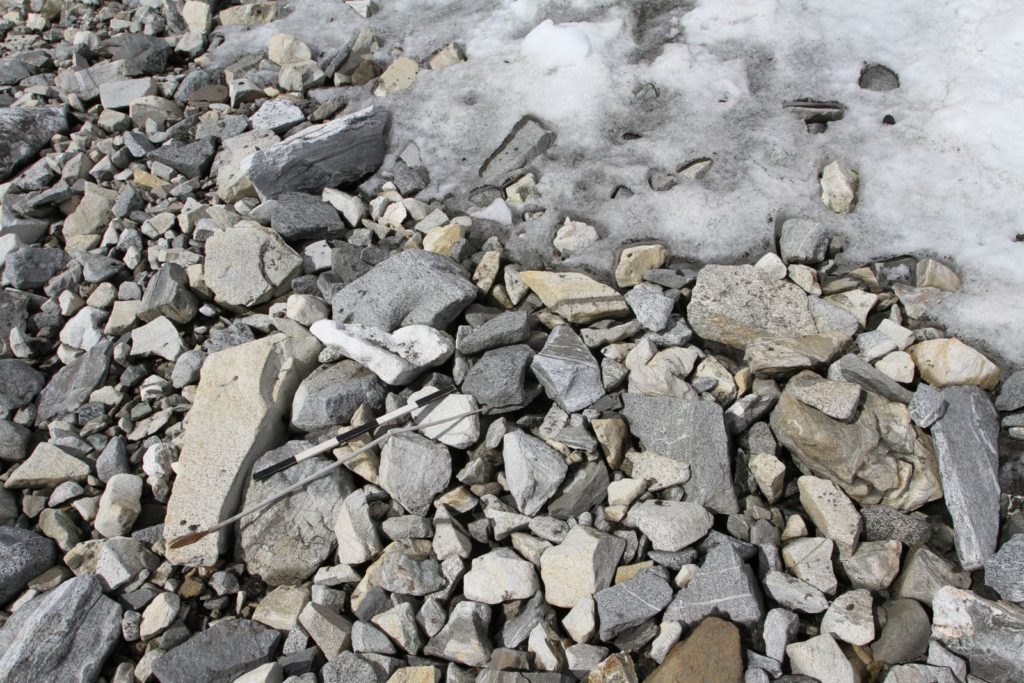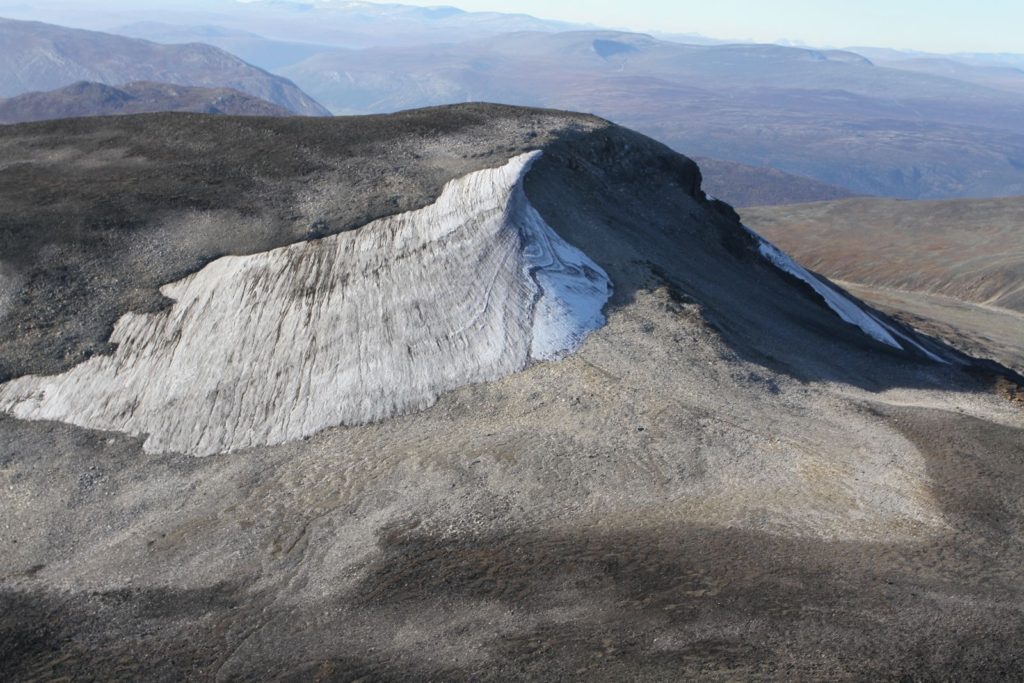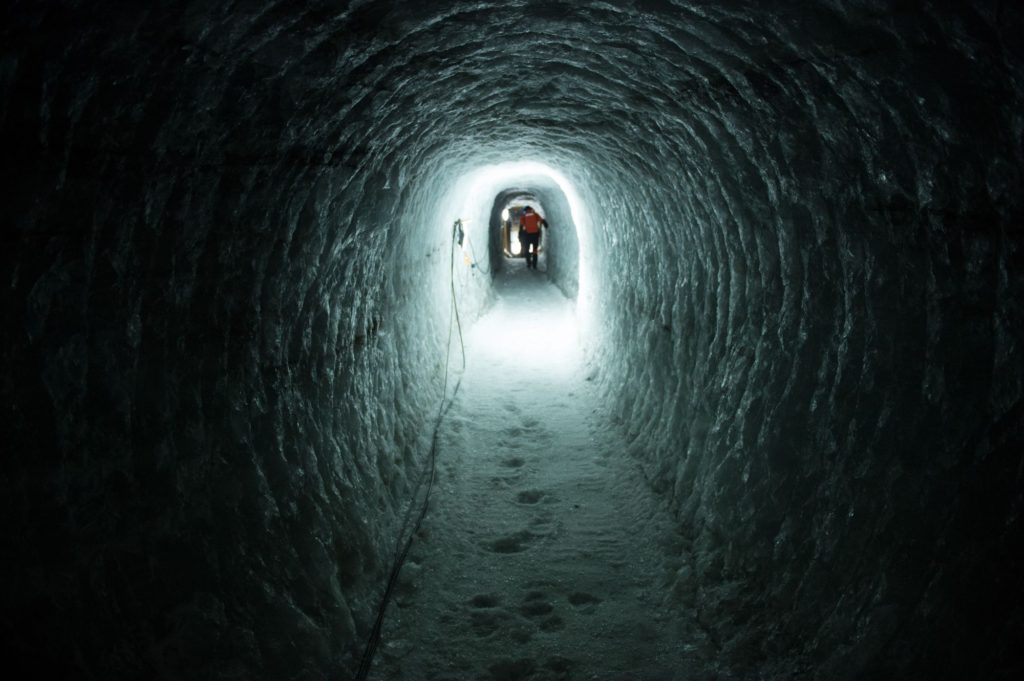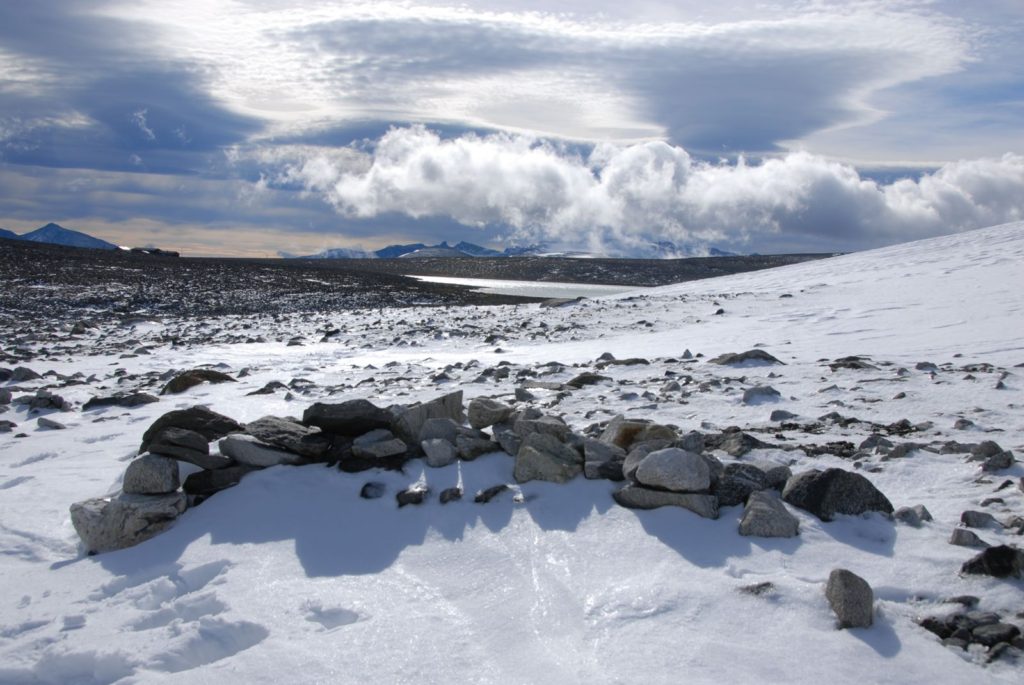We recently published a study of our ice finds in Innlandet. The story made its way into major news media, including National Geographic. A number of posts in the comment sections to the news stories observed that the artefacts are lying on the ground. The commenters somehow inferred that this means that global warming is fake news.
This is nothing new to us working in the field of glacial archaeology. We often find climate science denial in the comment sections to news on archaeological finds from the ice. When artefacts are shown lying on the ground in front of the retreating ice, one typical argument goes like this (paraphrasing): “This proves that there was no ice here, when the artefact was lost. So the Earth must have been warmer in the past. How is this possible when the current warming is supposedly caused by humans? The Vikings didn’t have SUVs?”
This argument is wrong for two main reasons. Firstly, humans originally lost most artefacts in the snow, not on the ground, where they now lie (see below). Secondly, the fact that climate change occurs naturally does not exclude that humans can have an influence on climate as well. This is just bad reasoning (non-sequitur). It is like claiming that humans cannot cause forest fires , because forest fires also happened for natural reasons before humans existed.
Have the artefacts never been out of the ice?
At the same time, the connection between the ice artefacts and global warming is often made in a too simplistic way. Paraphrasing again: “Global warming is leading to the melt out of artefacts, that have never been out of the ice, since they were lost in the snow millennia ago.” If that was indeed the case, we should find the artefacts melting out of the surface of the ice. This is rarely the case. We mostly find them on the ground, not on the ice surface.
So what can the artefacts from the ice tell us about climate change now and in the past?

Why do the artefacts lie on the ground?
Let us start with the nature of glaciers and ice patches. These are bodies of ice that react to changes in climate. The main drivers are mainly winter precipitation, summer temperature, and prevailing wind direction and strength during the winter season. They shrink when there is low winter precipitation and high summer temperatures. When there is high winter precipitation and low summer temperatures they grow. It is a bit more complicated, but let’s keep it at that.
Most artefacts are from ice patches, not glaciers (read about the difference between glaciers and ice patches here). Being smaller, ice patches react much more quickly to changes than glaciers. They also rely more on wind-drifted snow. For this reason, ice patches expand and contract more frequently than glaciers. This leads to the melt out of most of the artefacts during the millennia since their loss in the snow. Meltwater displaces the artefacts downslope after they melt out on the surface of the ice.
We actually saw this happening at Langfonne in 2014. When meltwater displaces the artefacts, they end up on the ground at the foot of the ice patch, even though originally lost further up on the ice. The frequent ice contractions and the displacement by meltwater are why most artefacts lie on the ground today. People did not lose them there originally.
When do some artefacts appear on the surface of the ice?
Objects are only found on the surface of the ice when the melting reaches ice layers previously untouched by melting. This was exactly what happened at Langfonne in 2014. The melt exposed intact ice layers more than 4000 years old.
After the melt-out and re-deposition of the artefacts on the ground, the ice re-covered and un-covered the artefacts on one or more occasions. Some artefacts have only rarely been out of the ice (or not at all), and have excellent preservation. Others saw repeated exposure to the elements and have poor preservation. Normally, the artefacts closest to present day ice show better preservation than the artefacts further away. This makes a lot of sense. The further away from the ice, the more frequently the artefact is likely to be intermittently exposed to the elements.

What is the connection between current climate change and the finds from the ice?
Let us start with the easy part – the present day. Is the current significant melting of the ice in the high mountains related to anthropogenic climate change? The short answer to that is yes, with a very high degree of certainty. You can read more about the retreat of mountain ice and the link to climate change here: National Snow & Ice Data Center.

What is the connection between past climate change and the finds from the ice?
What about past climate change? How did ice patches respond to changes in climate variables such as temperature, precipitation and winter wind direction in the past? To be honest, we do not know a lot about this. Glacial archaeology and the glaciological study of ice patches are very new scientific disciplines. A tunnel in the Juvfonne icepatch shows that the preserved ice in the Juvfonne ice patch dates from c. 7550 – 1000 years ago. These dates are from a few years back, and much of the ice younger than 3000 years ago has since melted away. Even so, the preservation of this very old ice clearly points to a resilience of the deepest layers of ice in this ice patch.
Extensive fieldwork at the Langfonne ice patch has shown that finds older than c. 4000 years ago lie very close to the present-day extent of the ice. The implication of this is that 4000 years ago the ice patch was more or less the size it is now. Younger finds, especially finds from 2000-900 years ago, lie both close to the ice and up to 100 meters away. This could indicate that the ice was larger then, but it could also be a result of what we archaeologists call a taphonomic overprint. The earliest finds further away from the ice are more likely to be lost over time.
We used to believe that finds were more likely to be preserved by the ice if they were lost during a time of advancing glaciers (and vice versa). However, our current archaeological record does not support this. In general, the link between the number of finds in different periods and the advance and retreat of glacial ice in those periods seems to be weak.

When can the findings tell us about an absence of ice?
Only in rare cases is it possible to gain direct information on the presence or absence of ice in the past from the archaeological finds. This is for instance the case when ancient monuments melt out of the ice, and they contain datable artefacts. As the monuments must have been built on ice-free ground, this provides a date when there was no ice at a specific location. Such finds are, however, very rare. We have a few examples of this in Innlandet – e.g. a hunting blind at the Juvfonne ice patch, which melted out of the ice in 2009. It contained scaring sticks, which were subsequently radiocarbon-dated to c. AD 400. However, this does not prove that the area around the hunting blind was generally free of ice at the time. It only proves that this was the case the year humans built the hunting blind.
Maybe in the future it will be possible to use the glacial artefacts and the preserved ice at the sites for climate history studies. At present, this is still too early.
Glacial archaeology and global warming
Summing up, can the finds from the ice be used to disprove anthropogenic climate change? No, they cannot. It would have been strange if that was possible. The scientific evidence for anthropogenic climate change is massive – see NASA: Climate Change Evidence and Royal Society: Climate change: Evidence and Causes.
What the artefacts from the ice tell us is that that at least some of the ice in the high mountains of Innlandet has now melted back to levels last seen 4000 years ago, during the Stone Age. The finds keep getting older, as the ice melts back. Climate science tells us that the melt-back of high mountain ice is mainly caused by anthropogenic climate change.
Climate scientists tell us that the high mountain ice is going to melt, most of it in this century. What we do not know is how long the ice patches will last, as they are less well studied than glaciers. Could we lose all the ice patches here in one dramatic melt (as discussed in this blogpost)? Or are we looking at a process much like what is happening to the Arctic sea ice, i.e. the individual years vary, but the trend is downwards? Time will tell.
